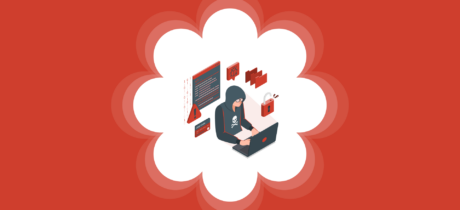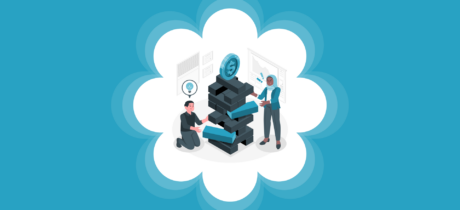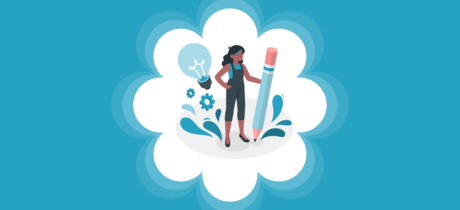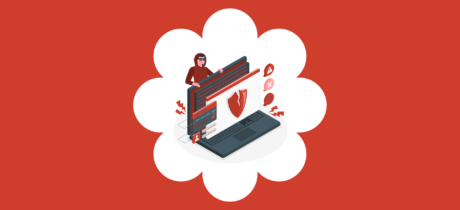
The Hidden Challenges of WordPress Maintenance for Agencies and How to Overcome Them
Table of Contents
As an experienced content creator, I understand the hidden challenges that agencies face when it comes to WordPress maintenance. In this blog post, I will explore these challenges and provide actionable solutions to overcome them.
WordPress maintenance mode is a valuable feature that allows for seamless updates, but it can also cause frustration when sites get stuck in this mode. To avoid this issue, it’s important to navigate away from the update screen or refresh it during an update, and update plugins one by one. However, if a site does get stuck, deleting the .maintenance file can quickly restore it to normal.
Security vulnerabilities and slow performance are common concerns for agencies managing WordPress sites. To address these challenges, it is crucial to keep installations and plugins/themes up to date, use reputable sources for plugins/themes, install security plugins, and enable SSL/TLS encryption. Additionally, optimizing website performance by using speed checkers, caching plugins, and efficient hosting can greatly improve user experience.
By understanding these challenges and implementing the suggested solutions, agencies can effectively navigate the world of WordPress maintenance and ensure a smooth and secure experience for their clients.
Key Takeaways
- WordPress maintenance mode is a feature that displays a temporary page during updates, but it can cause the entire site to be down if stuck.
- To avoid getting stuck in maintenance mode, refrain from refreshing or navigating away from the update screen and update plugins one by one.
- Security vulnerabilities and slow performance are common challenges in WordPress maintenance, but they can be overcome by keeping installations and plugins/themes up to date, using reputable sources, and optimizing hosting.
- Overreliance on plugins can lead to issues, so it’s important to use only necessary plugins, check compatibility, and periodically review and uninstall unnecessary ones.
- When WordPress sites get stuck in maintenance mode, they can be fixed by backing up the website, deleting the .maintenance file, and taking preventive measures for the future.
Understanding WordPress Maintenance Mode and Its Challenges
WordPress maintenance mode is a crucial feature that allows website owners to perform updates, upload new versions of themes or plugins, make code or content edits, and carry out site development without disrupting the user experience. When maintenance mode is enabled, visitors are shown a temporary page informing them that the site is undergoing maintenance.
What is WordPress maintenance mode?
WordPress maintenance mode is a built-in feature that ensures the smooth execution of updates and changes on a website. It prevents visitors from encountering broken pages or incomplete changes while updates are being applied. Instead, they are presented with a temporary maintenance page.
Getting stuck in maintenance mode
Unfortunately, there are instances when WordPress sites can get stuck in maintenance mode, causing the entire site to be inaccessible until the issue is resolved. This can happen due to software incompatibilities or interrupted updates. When a site gets stuck in maintenance mode, it can be frustrating for both website owners and visitors.
Tips to avoid getting stuck
To avoid getting stuck in maintenance mode, there are several best practices to follow:
- Avoid refreshing or navigating away from the update screen during an update. Doing so can interrupt the update process and potentially lead to getting stuck in maintenance mode.
- Update plugins one by one instead of updating multiple plugins simultaneously. This allows for better control and reduces the chances of encountering compatibility issues.
- Back up your website regularly using a reliable plugin like UpdraftPlus. This ensures that you have a recent backup to restore from in case anything goes wrong during an update.
- Ensure theme compatibility before updating. Some themes may not be compatible with the latest version of WordPress or certain plugins, which can lead to issues during updates.
- Consider upgrading to a more powerful web host if necessary. Inadequate server resources or slow hosting can contribute to maintenance mode problems.
The Challenges of WordPress Maintenance for Agencies and How to Overcome Them
WordPress maintenance poses several challenges for agencies. These challenges include security vulnerabilities, slow performance, the need for DIY work, overreliance on plugins, confusing errors, and unexpected costs. However, with proper knowledge and actions, these challenges can be overcome.
Security vulnerabilities
Security vulnerabilities are a major concern when it comes to WordPress maintenance. The open-source nature of WordPress and the prevalence of outdated installations and exploitable plugins and themes make websites vulnerable to attacks. To overcome these challenges, it is essential to:
- Keep WordPress installations and plugins/themes up to date.
- Use well-vetted plugins/themes from reputable sources.
- Install a WordPress security plugin to enhance website security.
- Choose strong passwords and consider implementing two-factor authentication.
- Enable SSL/TLS encryption to protect sensitive data transmitted through the website.
Slow performance
Slow website performance can negatively impact user experience and even affect search engine rankings. Several factors can contribute to slow performance, including poorly coded plugins, excessive plugins, inefficient hosting, and a bloated content database. To improve performance, consider the following steps:
- Use website speed checkers to identify performance bottlenecks.
- Follow optimization techniques to speed up your WordPress site.
- Switch to faster hosting if your current hosting is slow.
- Install caching plugins to reduce server load and improve page loading times.
- Reduce the number of plugins used and periodically review and uninstall unnecessary plugins.
- Consider using a content delivery network (CDN) to distribute website content globally and improve loading times for visitors from different locations.
DIY work and overreliance on plugins
Compared to other website builders, WordPress requires more DIY work, as website owners need to manage back-end functionality, find plugins/themes, and handle content and design. However, overreliance on plugins can lead to security vulnerabilities, slow down the website, and cause compatibility issues. To overcome these challenges, it is important to:
- Use only necessary plugins and regularly review and uninstall unnecessary ones.
- Check plugin compatibility before installation and update plugins one by one.
- Periodically review and update themes to ensure compatibility and security.
- Consider learning basic coding skills to handle simple customizations and reduce reliance on plugins.
Confusing errors and unexpected costs
WordPress can sometimes throw confusing errors, but most issues can be resolved by searching online for answers and troubleshooting guides. Additionally, unexpected costs associated with domain names, hosting, premium themes/plugins, designer/developer costs, and security protections can add up. It is important to be aware of these potential costs and budget accordingly.
In conclusion, while WordPress maintenance mode can present challenges, it is a necessary aspect of maintaining a secure and up-to-date website. By understanding the potential challenges and implementing best practices, website owners and agencies can overcome these obstacles and ensure a smooth and reliable online presence for their visitors. Remember, WordPress maintenance is a continuous process that requires attention and proactive measures to keep your website running optimally.
Extending and Customizing WordPress Maintenance Mode
WordPress maintenance mode is a crucial feature that allows website owners to display a temporary page to visitors during updates, ensuring a smooth user experience. However, this feature can sometimes present hidden challenges for agencies that manage WordPress sites. In this section, we will explore these challenges and discuss effective strategies to overcome them.
Plugins for Extending Maintenance Mode
WordPress offers a range of plugins that can extend and customize the maintenance mode experience. These plugins provide additional functionalities and options to enhance the temporary page displayed during updates. Some popular plugins for extending maintenance mode include:
- Coming Soon Page, Maintenance Mode & Landing Pages by SeedProd: This plugin allows you to create visually appealing coming soon and maintenance mode pages with customizable templates. It offers various features like countdown timers, contact forms, social media integration, and SEO settings.
- WP Maintenance Mode: This plugin offers a simple and intuitive interface to enable maintenance mode on your WordPress site. It provides customizable templates, email notifications, social media integration, and the ability to exclude specific pages from maintenance mode.
By utilizing these plugins, agencies can add their own branding, messages, and functionalities to the maintenance mode page, ensuring a seamless user experience and effective communication with visitors.
Manual Enabling of Maintenance Mode
While plugins provide convenient options for enabling maintenance mode, it is also possible to manually enable this feature using code. This method is particularly useful when you want to implement custom maintenance mode pages or functionalities. Here’s a step-by-step guide on how to manually enable maintenance mode:
- Access your WordPress site’s root directory using an FTP client like FileZilla.
- Locate the
wp-config.phpfile in the root directory and download a backup copy for safety. - Open the
wp-config.phpfile in a text editor and add the following line of code just before the line that says/* That's all, stop editing! Happy blogging. */:
define('WP_MAINTENANCE_MODE', true);
- Save the changes and upload the modified
wp-config.phpfile back to the root directory.
Once the code is added and the file is uploaded, your WordPress site will be in maintenance mode. Remember to remove or comment out the added code when you no longer need the maintenance mode.
Manual enabling of maintenance mode provides agencies with greater flexibility and control over the appearance and functionality of the temporary page.
In the next section, we will explore the hidden challenges that agencies face when it comes to WordPress maintenance and discuss effective strategies to overcome them.
Research citation: Kinsta – WordPress Maintenance Mode
Common Challenges of WordPress Maintenance for Agencies
Maintaining WordPress websites can be a complex task, especially for agencies that handle multiple client sites. While WordPress offers flexibility and functionality, it also presents a unique set of challenges. In this section, we will explore some of the common challenges faced by agencies when it comes to WordPress maintenance and discuss strategies to overcome them.
Security Vulnerabilities
One of the major concerns with WordPress maintenance is the security vulnerabilities that come with the open-source nature of the platform. Outdated installations, exploitable plugins, and themes can leave websites vulnerable to attacks. To overcome these challenges and ensure the security of WordPress sites, agencies should follow a few best practices:
- Keep WordPress installations, plugins, and themes up to date: Regularly updating WordPress core, plugins, and themes is essential to address security vulnerabilities and ensure compatibility.
- Use well-vetted plugins and themes: Choosing plugins and themes from reputable sources reduces the risk of installing malicious or poorly coded software.
- Install a WordPress security plugin: Utilize security plugins to enhance website security by implementing measures such as firewalls, malware scanning, and login protection.
- Choose strong passwords and consider two-factor authentication: Using strong, unique passwords and enabling two-factor authentication adds an extra layer of security.
- Enable SSL/TLS encryption: Encrypting data transmitted between the website and visitors helps protect sensitive information.
Slow Performance
Another common challenge faced by agencies is slow website performance. Poorly coded plugins, excessive plugins, inefficient hosting, and bloated content databases can all contribute to sluggish loading times. To improve performance, agencies can consider the following strategies:
- Use website speed checkers: Tools like Google PageSpeed Insights or GTmetrix can identify performance bottlenecks and provide recommendations for improvement.
- Follow steps to speed up WordPress sites: Optimizing images, minifying CSS and JavaScript files, and implementing caching can significantly enhance website speed.
- Switch to faster hosting: Upgrading to a more powerful web host can improve server response times and overall website performance.
- Install caching plugins: Utilize caching plugins to store static versions of website pages, reducing the server load and speeding up page rendering.
- Reduce the number of plugins: Limiting the number of plugins used on a website can help minimize conflicts and improve performance.
- Use a content delivery network (CDN): Offloading static content to a CDN can reduce server load and improve website speed for visitors worldwide.
DIY Work
Compared to other website builders, WordPress requires more do-it-yourself (DIY) work. Agencies need to handle back-end functionality, find suitable plugins and themes, and manage content and design. While this flexibility allows for customization, it can also increase the complexity of maintenance tasks. To effectively manage DIY work:
- Stay updated on WordPress developments: Keeping up with the latest WordPress news, tutorials, and best practices can help agencies stay informed and make informed decisions.
- Leverage resources and support: Online forums, WordPress communities, and developer resources can provide valuable assistance and guidance for handling DIY tasks.
- Consider partnering with experts: Collaborating with experienced WordPress developers or agencies can offload complex tasks and ensure the smooth operation of client websites.
Overreliance on Plugins
WordPress offers a vast ecosystem of plugins that extend functionality and enhance website features. However, overreliance on plugins can lead to security vulnerabilities, slow down the website, and cause compatibility issues. To address this challenge:
- Use only necessary plugins: Evaluate the necessity of each plugin and uninstall any unnecessary ones to minimize the risk of conflicts and performance issues.
- Check compatibility: Before installing a plugin, ensure that it is compatible with the version of WordPress and other plugins and themes being used.
- Periodically review and uninstall unnecessary plugins: Regularly reviewing installed plugins and removing any that are no longer needed can help improve website performance and security.
Confusing Errors
WordPress, like any software, can sometimes throw confusing errors that may leave agencies scratching their heads. However, most errors can be resolved by searching for answers and troubleshooting guides online. WordPress has a vast community of users and developers who can provide insights and solutions to common errors. By leveraging online resources and forums, agencies can overcome confusing errors and keep their WordPress sites running smoothly.
Unexpected Costs
While the WordPress CMS software itself is free, there are costs associated with using the platform. These costs include domain name registration, hosting fees, premium themes and plugins, designer/developer costs, and security protections. Agencies should be aware of these potential expenses and factor them into their budgeting and client pricing. By considering these costs upfront and communicating them effectively with clients, agencies can prevent unexpected financial burdens down the line.
In conclusion, WordPress maintenance for agencies comes with its fair share of challenges. From security vulnerabilities and slow performance to DIY work and unexpected costs, agencies need to be proactive in addressing these issues. By following best practices, staying informed, and leveraging resources, agencies can overcome these challenges and ensure the smooth operation of their clients’ WordPress websites.
Overcoming Security Challenges in WordPress Maintenance
WordPress is a popular content management system (CMS) that offers affordability, intuitiveness, and accessibility for website owners. However, it is not without its challenges. Agencies that maintain WordPress websites often face security vulnerabilities, slow performance, confusing errors, and unexpected costs. In this section, we will explore the hidden challenges of WordPress maintenance for agencies and discuss effective strategies to overcome them.
Keeping WordPress up to date
One of the most important steps in ensuring the security of a WordPress website is keeping the core installation, plugins, and themes up to date. Security vulnerabilities can arise from outdated software, allowing hackers to exploit weaknesses and compromise the website’s integrity. By regularly updating WordPress and its components, agencies can stay ahead of potential security threats.
Using reputable plugins/themes
Another aspect of WordPress maintenance that agencies must pay attention to is the selection of plugins and themes. It is crucial to choose well-vetted plugins and themes from reputable sources. Poorly coded or outdated plugins and themes can introduce security vulnerabilities and affect the overall performance of the website. By conducting thorough research and relying on trusted sources, agencies can minimize the risk of security breaches.
Installing a security plugin
To enhance the security of a WordPress website, agencies should consider installing a dedicated security plugin. These plugins provide additional layers of protection by scanning for malware, monitoring for suspicious activities, and implementing firewall rules. Popular security plugins include Wordfence Security, Sucuri Security, and iThemes Security. By leveraging the capabilities of these plugins, agencies can proactively safeguard their clients’ websites.
Strong passwords and two-factor authentication
Passwords play a crucial role in securing WordPress websites. Agencies should encourage their clients to choose strong passwords that include a combination of uppercase and lowercase letters, numbers, and special characters. Additionally, enabling two-factor authentication adds an extra layer of security by requiring a second form of verification, such as a code sent to a mobile device. By implementing these measures, agencies can significantly reduce the risk of unauthorized access.
Enabling SSL/TLS encryption
Encrypting data transmitted between the website and its users is essential for maintaining the privacy and security of sensitive information. Enabling SSL/TLS encryption ensures that data is encrypted and cannot be intercepted by malicious actors. Agencies should guide their clients in obtaining and installing SSL certificates for their WordPress websites. This not only protects valuable data but also boosts the website’s credibility and trustworthiness.
In conclusion, while WordPress maintenance for agencies presents its fair share of challenges, there are effective strategies to overcome them. By keeping WordPress installations and plugins/themes up to date, using reputable plugins/themes, installing a security plugin, choosing strong passwords and implementing two-factor authentication, and enabling SSL/TLS encryption, agencies can enhance the security of their clients’ WordPress websites and provide a safe online environment.
Improving Performance in WordPress Maintenance
Maintaining a WordPress website can come with its fair share of challenges for agencies. From security vulnerabilities to confusing errors, agencies often find themselves grappling with various issues. One common challenge that agencies face is slow performance, which can greatly impact the user experience. Fortunately, there are several strategies and techniques to overcome this challenge and boost the performance of WordPress websites.
Identifying causes of slow performance
Before diving into solutions, it’s crucial to identify the causes of slow performance. Poorly coded plugins, excessive plugins, inefficient hosting, or a bloated content database can all contribute to sluggish website performance. By pinpointing the root causes, agencies can take targeted steps to optimize their websites and enhance speed.
Using website speed checkers
Website speed checkers are valuable tools for assessing the performance of a WordPress website. These tools analyze various aspects of the site, such as page load times, server response times, and overall speed. By using website speed checkers, agencies can gain insights into areas that need improvement and prioritize their optimization efforts.
Speed optimization techniques
Once the causes of slow performance have been identified, agencies can implement speed optimization techniques to enhance their WordPress websites. These techniques can include:
- Switching to faster hosting: Choosing a hosting provider that offers faster server response times and better performance can significantly improve website speed.
- Installing caching plugins: Caching plugins create static versions of dynamic content, reducing the time it takes to load pages and improving overall performance.
- Reducing plugin count: Minimizing the number of plugins used on a website can help eliminate unnecessary code and reduce the strain on server resources.
- Utilizing a content delivery network (CDN): CDNs distribute website content across multiple servers globally, reducing the distance between users and the site’s server and improving load times.
Choosing efficient hosting
The choice of hosting provider plays a crucial role in website performance. Opting for a reliable and efficient hosting provider can significantly enhance speed and overall performance. It’s important to consider factors such as server response times, uptime guarantees, and scalability when selecting a hosting provider for WordPress websites.
Utilizing caching plugins
Caching plugins are a valuable tool in optimizing website performance. These plugins create static versions of dynamic content, reducing the need for the server to generate content on the fly for each visitor. By serving pre-generated content, caching plugins can greatly improve page load times and overall website speed.
Reducing plugin count
While plugins can enhance functionality and add features to a WordPress website, an excessive number of plugins can negatively impact performance. Each plugin adds additional code and functionality, which can slow down the website. It’s important for agencies to regularly review and uninstall unnecessary plugins, keeping only those that are essential to the website’s functionality.
Content delivery network (CDN)
Implementing a content delivery network (CDN) can significantly improve website speed and performance. CDNs distribute website content across multiple servers located in various geographic locations. When a user visits the website, the content is delivered from the server closest to their location, reducing latency and improving load times.
By implementing these strategies and techniques, agencies can overcome the challenges of slow performance in WordPress maintenance. Improving website speed not only enhances the user experience but also contributes to better search engine rankings and increased conversions.
Source: ThemeIsle
Dealing with DIY Work and Plugin Overreliance
One of the challenges that agencies often face when it comes to WordPress maintenance is the need for DIY work and overreliance on plugins. Unlike other website builders, WordPress requires more hands-on management of back-end functionality, plugin and theme selection, and content and design handling. While this level of control can be empowering, it can also be overwhelming, especially for those who are not well-versed in web development.
Managing Back-end Functionality
As an agency working with WordPress, I have found that managing back-end functionality is a crucial aspect of maintenance. This includes tasks such as updating WordPress installations, monitoring plugin and theme updates, handling database optimization, and ensuring website security. While these tasks may require a level of technical expertise, there are resources and tools available that can simplify the process.
Selecting Necessary Plugins/Themes
Another challenge agencies face is the temptation to rely heavily on plugins and themes to add functionality and enhance the design of a website. While plugins and themes can be incredibly useful, overreliance on them can lead to a host of issues, including security vulnerabilities, slow performance, and compatibility problems. It is important to carefully select and evaluate the necessity of each plugin or theme before adding it to a website.
To overcome this challenge, I recommend taking a strategic approach to plugin and theme selection. Consider the specific needs of the website and choose well-vetted plugins and themes from reputable sources. Additionally, regularly review and uninstall unnecessary plugins to minimize the risk of security vulnerabilities and optimize website performance.
Periodically Reviewing and Uninstalling Unnecessary Plugins
One of the most effective ways to overcome the challenges of plugin overreliance is to periodically review and uninstall unnecessary plugins. Over time, websites may accumulate plugins that are no longer needed or compatible with the latest WordPress updates. These unused plugins can not only slow down the website but also pose security risks.
By conducting regular plugin audits, you can identify and remove plugins that are no longer serving a purpose. This not only improves website performance but also reduces the potential for security vulnerabilities. Remember, it’s always better to have a lean and efficient website rather than one weighed down by unnecessary plugins.
In conclusion, while WordPress maintenance for agencies may present challenges in terms of DIY work and plugin overreliance, these challenges can be overcome with proper knowledge and actions. By effectively managing back-end functionality, selecting necessary plugins and themes, and periodically reviewing and uninstalling unnecessary plugins, agencies can maintain secure and high-performing WordPress websites.
To learn more about WordPress maintenance mode and its challenges, check out this article for detailed information.
Resolving Confusing Errors and Managing Costs
As agencies navigate the world of WordPress maintenance, they often encounter various challenges that can be perplexing and costly. From confusing errors to unexpected expenses, these hurdles can make the maintenance process overwhelming. However, with the right knowledge and preventive measures, agencies can overcome these hidden challenges and ensure smooth operations for their WordPress sites.
Troubleshooting common errors
WordPress, like any other platform, can throw its fair share of confusing errors. When faced with these issues, it’s essential to approach them with a problem-solving mindset. A quick online search can often lead to troubleshooting guides and answers from the WordPress community. By leveraging the collective knowledge and experience of others, agencies can resolve these errors efficiently.
Preventive measures
To minimize the occurrence of errors and streamline the maintenance process, agencies can take several preventive measures. Keeping WordPress installations and plugins/themes up to date is crucial for addressing security vulnerabilities. By using well-vetted plugins/themes from reputable sources, agencies can reduce the risk of exploits. Additionally, installing a WordPress security plugin, choosing strong passwords, and enabling SSL/TLS encryption can further enhance site security.
Another common challenge agencies face is slow performance. To address this issue, website owners can utilize website speed checkers to identify areas for improvement. Following steps to optimize their WordPress site, such as reducing the number of plugins, using caching plugins, and considering a content delivery network (CDN), can significantly enhance site performance.
Understanding associated costs
While WordPress itself is a free CMS software, there are associated costs when using the platform. Agencies must consider expenses such as domain names, hosting, premium themes/plugins, designer/developer costs, and security protections. These costs vary depending on the agency’s specific needs and requirements. By understanding and budgeting for these expenses, agencies can effectively manage their WordPress maintenance costs.
It’s worth noting that despite the challenges, WordPress remains a popular choice for agencies due to its affordability, intuitiveness, accessibility, and user-friendliness. With proper knowledge and actions, most of these challenges can be prevented or overcome. The key is to stay proactive, continuously educate oneself, and adapt to the ever-evolving WordPress landscape.
To delve deeper into the topic of WordPress maintenance challenges and how to overcome them, refer to this informative article that explores the issue of WordPress sites getting stuck in maintenance mode and provides practical solutions to resolve the problem.
Remember, maintaining a WordPress site doesn’t have to be a daunting task. With the right approach and a proactive mindset, agencies can successfully navigate through the confusing errors and effectively manage the costs associated with WordPress maintenance.
Frequently Asked Questions
What is WordPress maintenance mode?
WordPress maintenance mode is a feature that displays a temporary page to visitors during updates.
How can a WordPress site get stuck in maintenance mode?
WordPress sites can get stuck in maintenance mode if there is an interruption during the update process or if the update screen is refreshed or navigated away from.
How can I avoid getting stuck in maintenance mode?
To avoid getting stuck in maintenance mode, it is recommended to avoid refreshing or navigating away from the update screen during an update. Additionally, updating plugins one by one can help prevent this issue.
What should I do if my site is stuck in maintenance mode?
If a site is stuck in maintenance mode, you can delete the .maintenance file that was created during the update process to return the site to normal.
Are there plugins available to customize WordPress maintenance mode?
Yes, there are plugins available to extend and customize WordPress maintenance mode. Some popular options include Coming Soon Page, Maintenance Mode & Landing Pages by SeedProd, and WP Maintenance Mode.
Can WordPress maintenance mode be manually enabled?
Yes, WordPress maintenance mode can be manually enabled either with code or by using a plugin.
When is maintenance mode useful?
Maintenance mode is useful during updates, when uploading new versions of themes or plugins, when making code or content edits, and during site development.
What are common challenges of WordPress maintenance for agencies?
Common challenges of WordPress maintenance for agencies include security vulnerabilities, slow performance, the need for DIY work, overreliance on plugins, confusing errors, and unexpected costs.
How can security vulnerabilities be overcome?
To overcome security challenges, it is important to keep WordPress installations and plugins/themes up to date, use well-vetted plugins/themes from reputable sources, install a WordPress security plugin, choose strong passwords, consider two-factor authentication, and enable SSL/TLS encryption.
What can be done to improve slow performance?
To improve performance, website owners can use website speed checkers, follow steps to speed up their WordPress site, switch to faster hosting, install caching plugins, reduce the number of plugins, or use a content delivery network (CDN).
Why does WordPress require more DIY work compared to other website builders?
WordPress requires more DIY work compared to other website builders because website owners need to manage back-end functionality, find plugins/themes, and handle content and design.
What are the risks of overreliance on plugins?
Overreliance on plugins can lead to security vulnerabilities, slow down the website, and cause compatibility issues. It is important to use only necessary plugins, check compatibility, and periodically review and uninstall unnecessary plugins.
How can confusing errors in WordPress be resolved?
Most errors in WordPress can be resolved by searching online for answers and troubleshooting guides.
Are there costs associated with using WordPress?
While the WordPress CMS software is free, there are costs associated with using the platform, such as domain name, hosting, premium themes/plugins, designer/developer costs, and security protections.
Why is WordPress still popular despite its challenges?
WordPress remains popular due to its affordability, intuitiveness, accessibility, and user-friendliness. Most issues can be prevented with proper knowledge and actions.
How can I fix a WordPress site stuck in maintenance mode?
To fix a WordPress site stuck in maintenance mode, you can back up your website using a plugin like UpdraftPlus, connect to an FTP client like FileZilla, and delete the .maintenance file.
How can I prevent my WordPress site from getting stuck in maintenance mode in the future?
To prevent your WordPress site from getting stuck in maintenance mode in the future, it is recommended to manage WordPress tools effectively, avoid updating multiple plugins simultaneously, limit the number of plugins used, ensure theme compatibility, and consider upgrading to a more powerful web host if necessary.







